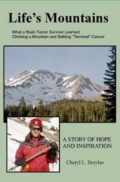BATTLING WITH...AFFECTING METABOLISM
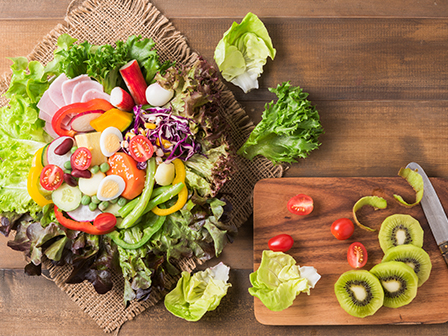
The bottom line is; metabolism affects cancer cells grow. It’s that simple. Over the sixteen years I’ve been battling the GBM, I continue to learn more and more about this topic. But the more I learn, the more confusing it gets. It’s to understand the summary that metabolism affect tumor growth, but the complexity of it all is overwhelming and hard to wrap my brain around it. However, I was determined to get a grasp on it, so I read much research, web pages, and books about this topic. Overall, what you eat plays a key role in how the cancer cells in a brain respond.
What is eaten, and how it’s metabolized can seriously stimulate the tumor to grow, or hinder its growth. I will try to describe this topic in a simple way, because that is all my brain can do. But it’s hard to simplify and summarize the complexity of our metabolism and its effect on cancer cells. Whole books have been written about it.
Simply, cancer cells can feed off of two things, glucose and glutamate. Glucose is from the carbohydrates we eat. Some carbohydrates like sugar can raise the glucose in our blood very high. While some carbohydrates, like spinach, do not raise the blood glucose much. That is called the “blood glucose index”, sugar being 100, and spinach being way lower.
Cancer cells metabolize glucose 15+ times faster than normal cells. So if you eat a “high glucose index” food, like sugar, or even white rice, it’s like you are giving the cancer cells a huge plate of food to pig out on. If you eat spinach, with a much lower “blood glucose index”, it’s like starving them off, with not much of anything to eat. That is a very simple description of it.
Glutamate is the other thing that cancer cells can metabolize and survive and grow from. Glutamate comes from most proteins from meats, but also from processed foods like, pork processed into sausage, milk procced into cheese, wheat grains processed into flour, and even tomatoes processed into spaghetti sauce. The more processed the food is, the higher the glutamate is in that food (I cover this topic more under the benaGene section).
On the other hand, there is one thing we can eat, that cancer cells can NOT metabolize or grow off of, that is fat. Yes fat. Yes, there is fat in bacon and a big fat beef steak, but remember, there is also glutamate in in those. And yes, there is a lot of fat in nuts, cheese, and some fatty meats, but any proteins in them can change into some carbohydrates (glucose) after we eat them. And again, there is some glutamate in it too. YES, it gets very confusing and complex. So the only food we can eat, that does not feed the cancer cells, is pure 100% fats like avocados, coconut oil, olive oil, butter, etc.
Over my learning time; at times I’ve gotten too scared to eat anything! What should I eat, what should I avoid. It can get so confusing and overwhelming. Over time I’ve learned more about following a diet that limits the amount of cancer “food” in my system, and also began talking some supplements and prescriptions that also help to keep the glucose and glutamate (cancer food) lower in my system.
I’ll try to simply explain what I do to try to keep my brain tumor cancer cells at bay. I don’t think I can completely starve them off or be cured from the cancer, but research shows I can slow down any growth or even keep the cancer quiet like they are asleep. I’ll talk about Metformin, following a Ketogenic diet, the DCA, and benaGene.
Metformin
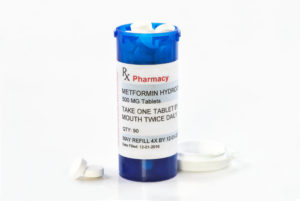 Lowering Glucose with Metformin
Lowering Glucose with Metformin
In 2013 I read the book “Cancer as a Metabolic Disease” by doctor Thomas N. Seyfried, and I became even MORE motivated to lower my blood glucose level beyond what I could do myself with changes in my diet. My goal was to keep my blood glucose as low and I could, safely!
So in January 2014 I began taking a diabetic prescription called Metformin, which helps lower your blood glucose. There is research that shows how the Metformin can help hinder cancer growth. Currently it’s even become prescribed more often to cancer patient to help fight the cancer.
I started taking 500mg with breakfast and dinner, a total of 1,000mg a day. After reading more about its positive effect on cancer; I raised the dose of Metformin to 500mg three times a day, to 1,500mg.
At that point I began seriously keeping track of my blood glucose. First thing each “fasted” morning, I poke my finger with a tiny needle (lancet) and then put the drop of blood on the “glucose test strip”, which I had entered into the “nova Max Plus” (it’s not as complicated as it sounds!). My goal was to keep my blood glucose down in the 80s or lower. And I really noticed that what I eat the day before, seriously affected what my blood glucose was the next day.
If I had broken down and had a bowl of popcorn, or ice cream the night before (yes I do still eat some carbohydrates, but try to limit my amount, but I do have BAD where I lose control! ha ha), those mornings I find my blood glucose sometimes in the 100s. Not good. So over time I’ve gotten better at knowing what can really seriously raise my blood glucose too high, and what I can eat without breaking my goals.
At this point I’ve been on the Metformin 3 years, and I plan on being on it indefinitely.
The Metformin can have some bad side effects if you go upon the dose too fast, like gas and diarrhea. So it’s important to raise the dose slowly so your body gets used to it. The Metformin also can affect your kidney, so I was told that if you are going in for a CAT Scan, you need to go off the Metformin for that day (or more?). On the other hand, you can go in for MRIs while on Metformin. And over time, they wanted me off the Metformin if I was going in for surgery. So I guess like any other prescription, we need to check with our doctors for any conflictions.
Ketogenic Diet
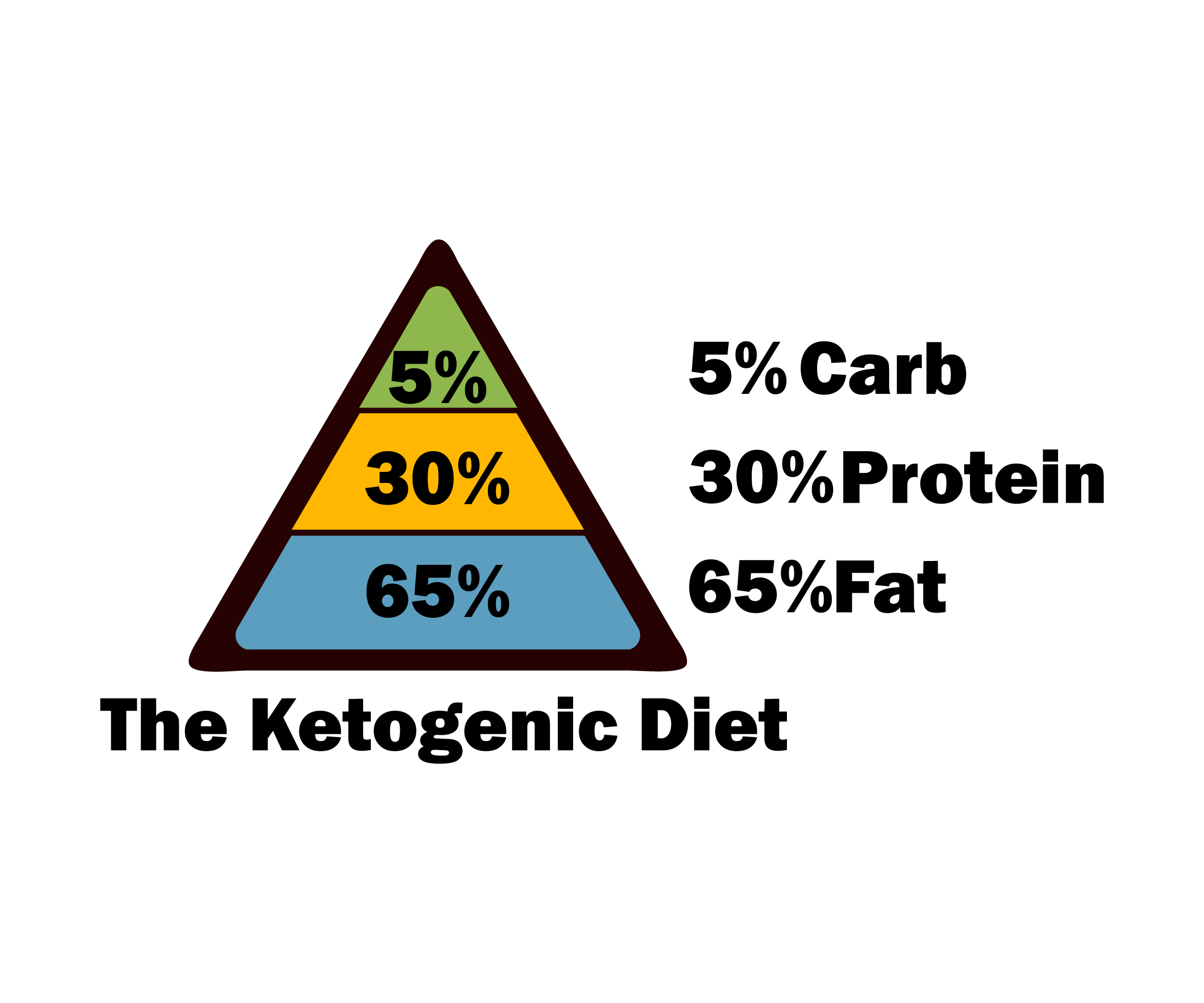 As I described in the “Affecting Metabolist” cancer cells live off of glucose and glutamate, and cannot metabolize fat. Consequently some people go onto what is called a Ketogenic diet, to starve off the cancer. It’s a diet there you mostly eat fat, and a lot of fat. On the Ketogenic diet, you go into what is called Ketosis, where your body pretty much just metabolizes fat (starving off the cancer cells).
As I described in the “Affecting Metabolist” cancer cells live off of glucose and glutamate, and cannot metabolize fat. Consequently some people go onto what is called a Ketogenic diet, to starve off the cancer. It’s a diet there you mostly eat fat, and a lot of fat. On the Ketogenic diet, you go into what is called Ketosis, where your body pretty much just metabolizes fat (starving off the cancer cells).
This diet is not simple, too complex for me to describe here on my web. There are many great web pages out there that go into the details needed (I will list some of them below).
I have been on the Ketogenic diet three times. The first time for two months, the second time for only one month, and the third time I just completed this week, was only a month. This last month while I was on the keto diet, I had hoped to follow the diet for an extended period of time. However, I need to go into surgery to get a biopsy of a questionable spot on my pituitary. During the surgery time, in the hospital, it would be very hard to follow. As I said, it’s very challenging to strictly follow the keto diet. When I’m home, with a weight scale, and I can really control and measure what I eat it’s not too hard. However traveling and eating in restaurants is a serious challenge. If you’re willing to give it a try, it’s well worth it.
I’ll try to give a very little kindergarten summary of the ketogenic diet. On the keto diet you mostly eat fat. How much is all based on your weight, and how many calories you need in a day. Based on my age, sex, weight and height, I should always eat over 110 grams of fat each day, about 50 grams of protein, and less than 40 grams of carbohydrates (it would be even better if I could handle only 20 gram of carbs, but that is a real challenge). If you eat too many carbs and proteins, you will not reach the goal of going into ketosis; where your body does not metabolize the glucose and glutamates anymore, and goes into only metabolizing on fat.
There are given “ketosis” goals while on the diet. You can track your ketones from a tester that is like the blood test you take for the blood glucose. While I’m on the Ketogenic diet, I test my ketone test every morning, with the goal of it being >2. It would even be better to reach 4, but that is about impossible for me to reach, unless I just about ate 100% fat!
The good news is I LOVE some of the fatty fatty foods. My favorite is avocados. I can do so many things with avocados, like making an Omelet with a lot of avocado, cheese, and butter. I also enjoy eating things like olives and olive oil, Mayo in the Devils eggs, Pumpkin seeds and pecan nuts, olive oil dressing on low carb cucumber salads, and my other favorite – “chocolate fudge fat bomb”. It has lots of coconut oil, some unsweetened chocolate powder, some cream cheese, some butter, some almond flour, and some natural stevia for sweetness. It really tastes great. So when I have not eaten enough fat for that meal, I eat one or two of the “fat bombs” to bring up my ketosis.
What is hardest for me being on the ketogenic diet is that I am the “cook” of the family; and my family love to eat carbohydrates. Potatoes, pasta, breads, rice, popcorn; all the things I can’t eat while on the keto diet. Also they like to eat things like big hamburgers, with the bun, catsup, and a huge piece of cheese. I can only have a tiny 2 oz. of the burger meat and a tiny piece of cheese on the top (otherwise I would have too much protein), but no bum, no catsup, no tomato. It’s hard calling mine a “hamburger”. I could put all the butter or avocado on the top of it, but it’s just not the same. It’s hard to see that food right under my nose without going crazy in desire.
On the keto diet, you even need to control the veggies and fruits you eat. With only <40 grams, even better < 20 grams of carbs, you can’t eat hardly any veggies and fruits. Only things like cucumbers, with are about zero on carbs. It’s impossible to eat fruits like bananas, apples, anything that is high blood glucose index. I could only eat a few grams of fruits like berries that have a lot of fiber, which lower the blood glucose index. See, it gets complicated and can get frustrating. After a while you can get used to it and creative. There are some really good ketogenic recipe books. If you know how, you can even make some ketogenic bread, pancakes, etc. But it takes effort, and does not taste the same as real bread, but you can sure cover it with a lot of butter!
Overall, I’ve gone off and on the Ketogenic diet over time. It’s just hard for me to tolerate it for an extended period of time. But I figure any time on the keto diet, is better than nothing. If you want to try it, I highly recommend getting a book about it, or at least look over the web pages I’ve linked below. There are actually many webs pages on the internet that covers this topic.
www.ketogenic-diet-resource.com
https://ketonutrition.net/
www.ruled.me
benaGene
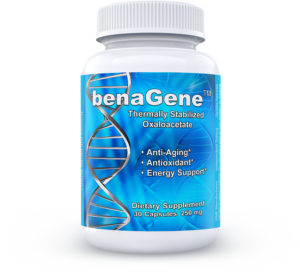 benaGene (Oxaloacetic acid) works to help block glutamate. As I described under the “Affecting Metabolism”, cancer cells metabolize and feed off of Glutamate. Glutamate can pile into the brain even faster and with a higher dose for people with damaged “blood brain barrier” (brain tumor patients having gone through surgery, chemo, and radiation have blood brain barrier damage). In late 2016 I found out about the benaGene and how it helps block the glutamate from overdosing in the brain, which in result helps slower the growth of cancer cells.
benaGene (Oxaloacetic acid) works to help block glutamate. As I described under the “Affecting Metabolism”, cancer cells metabolize and feed off of Glutamate. Glutamate can pile into the brain even faster and with a higher dose for people with damaged “blood brain barrier” (brain tumor patients having gone through surgery, chemo, and radiation have blood brain barrier damage). In late 2016 I found out about the benaGene and how it helps block the glutamate from overdosing in the brain, which in result helps slower the growth of cancer cells.
Before getting more into the benaGene itself, I’ll try to describe a little more about glutamates.
Glutamate comes from meat proteins, but also from processed foods like, milk procced into cheese or whey protein powder, wheat grains processed into flour for breads, pork processed into sausage or salami, and even tomatoes processed into spaghetti sauce. The more processed the food is, the higher the glutamate dose is in that food. So some food as a higher dose of glutamate, and other foods have a lower dose. The only thing that does not have any glutamate is fat.
In the past I daily ate something with whey protein in it. I thought it was a good healthy protein source. I was wrong. At least for me, fighting brain cancer and with damage to my “blood brain barrier”. I did not realize that eating Whey protein powder was hammering by brain with a very high dose of glutamate, one of the highest there is out there. Because it comes from milk (dairy) and is processed, processed and processed more into the white whey powder.
After I learned more about the glutamate and its damaging effect to brains and cancer, I decided to not take the whey protein anymore, and watch my diet, trying to cut back on over dosing on the glutamate. (Glutamate is different than the gluten)I kept reading more and more about the glutamate and how benaGene helps block it. I found some info that amazed me, there is a similarity between one of the anti-seizure meds I’m taking (Lamictal) and the benaGene . Both work by “blocking” the Glutamate. Before that point, I did not realize the roll Glutamate plays in seizures too. I kept reading more and more, and became convinced it would be beneficial to “block” Glutamate with thebenaGene. But I was still hesitant to buy some.
So at my next MRIs (at UCSF) I brought info about the benaGene and glutamate in to ask my neuro-oncologist and my epilepsy doctor opinions about it. They both said things like, “Interesting, I can see how it may interact with the tumor/seizures, I will look more into it, it would not hurt you trying it.”
So I decided to order some. The first day I had it, I swallowed a capsule at each meal, breakfast, lunch and dinner, and on day one I was amazed. It felt like my brain was reborn, restored, uplifted! My brain thought faster, clearer, and I had more brain energy than I have had for years! (For many years since I was diagnosed, my brain worked slower, I have been more confused, and overwhelmed with brain fatigue, etc.) ThebenaGene changed it, now I am amazed at what I can do in a day!
What is even more amazing is that it stopped my seizures on day one. I had been having at least 2 or more seizures a week at that time. I was on two anti-seizure meds and I was still being hit with seizure after seizure. During my first two months of takingbenaGene I only had one seizure. In the past I would have had 16 or more seizures during that time period. The one seizure I had during that time, I had OVER pushed myself that day (Christmas), and had ate a LOT of Chocolate (Chocolate and caffeine is well known to trigger seizures).
Since I started the benaGene and up to this date (Feb 2017) my MRIs have looked clear, no seen GBM tumor. However, it’s hard for me to say if the benaGene really stopped tumor from growing, because my MRI looked clear before I began taking it. However I can say that it stopped my seizures and seemed to help my brains cognitive abilities, energy, and memory. It did not completely restore my brain back to before I was diagnosed with the GBM, but it truly significantly improved.
The first month I only took 1 capsule three times a day, a total of 3 a day. I was so impressed, so the second month I took 2 pills three times a day, a total of 6 a day. My brain seems to get better and better. It’s my understanding that to seriously fight and shrink a growing tumor; it would take at least double that dose. I would personally take a higher dose if I could afford it.
The cost is not cheap because it has not been FDA approved as a prescribed “Medicine”; consequently health insurance does not over it. Currently as of Feb. 2017 it has only been FDA approved as an “Orphan Drug” designation for Glial Tumors, “as a medical food for the unique metabolic needs of the glial tumor patients.”
The good news is that the company is beginning to do research needed to get it FDA approved as a “Medical Treatment.” Once FDA approves it as a medicine, it would be covered by health insurance.
This is the link to where you can buy benaGene . www.benaGene.com
Explaining in more details how benaGene scientifically works, is too complicated for me to do. The good thing is the company sent me this link to information that the details. https://www.dropbox.com/sh/fijgzi7p2lkknay/AACnFzGCrMHLOjN7iDGfRYFsa?dl=0
Sodium DichloroAcetate (DCA)
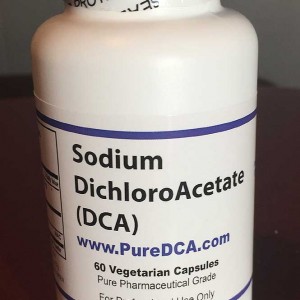 I began taking the DCA in 2013 when my MRI showed a new suspicious “spot”. It is well known that cancer cells metabolize glucose 15+ times faster than normal cells.
I began taking the DCA in 2013 when my MRI showed a new suspicious “spot”. It is well known that cancer cells metabolize glucose 15+ times faster than normal cells.
If your blood glucose (from carbohydrates you eat) rises high, it’s like feeding the cancer cells, promoting its growth. Consequently my goal is to keep my blood glucose lower.
DCA is used to lower your blood glucose. I am no doctor, so I am not even going to try to explain now the DCA works. So I will give you a simple summary of what I do.
BUT I highly recommend that you talk with your doctor about it or research about it more on the internet.
In the USA, it is not FDA approved as a prescribed medicine. But it is often used by some doctors in Canada as a standard treatment.
There are many good web pages about using DCA to fight cancer. Here are a few:
https://dcawatch.com/home/
https://www.thedcasite.com
https://puredca.com
I buy the DCA from www.pharma-dca.com/store/
The DCA I get comes in a white powder format. I use a scale to measure out the dose I need to take. I take 12mg/kg a day. To calculate the dose I need to take I convert my weight in pounds to KG. 133lbs divided by 2.2 = 60.45 kg. Then I multiply 60.445kg by 12mg = 720mg a day. I measure it on my scale in grams, so I take 0.72grams a day (720mg). I take .36g with breakfast and .36 with dinner. The dose I take varies if my weight varies.
I measure out the amount needed with a scale, then put it in a tiny glass cup, I add a little water and drink it down. It does not have much of a taste. I store the DCA in the refrigerator. When I first started taking the DCA I was on it for about 3 months daily. But my toes started to get numb, which is one of the possible side effects. I learned later that if you take B1 80mg twice a day, R-form Alpha Lipoid Acid 150 three times a day, and Acetyl L-Carnitine 500mg three times a day, it reduces the risk of the nerve damage effects.
I also decided to go off and on the DCA, so it will not build up too much in my system. So I now just take it about 5 days on 5 days off. The feelings to my toes came back and are fine now. At this point it does not show any side effects on me.
If you are fighting brain cancer, you must be careful drinking caffeine. Caffeine makes the DCA work even better; so many cancer patients take a LOT of caffeine with the DCA. But people with brain tumors have to be careful, because with a lot of caffeine it can make you have a bad side effect and maybe kill. I only drink green tea all day, which is not high on caffeine.
At the Seattle brain tumor conference, I got to talk with some neuro docs about it and they all felt the DCA was VERY promising, even one of the docs is starting a clinical trial with it! I hope it starts soon!!!
UPDATE – Oct 2016
I am currently not on the DCA. When I began having all of my simple partial seizures this last year, and began taking the anti-seizure meds, I stopped taking the DCA. Just want to get the seizures under control and the new meds in my system, then I will most likely go back on the DCA.

